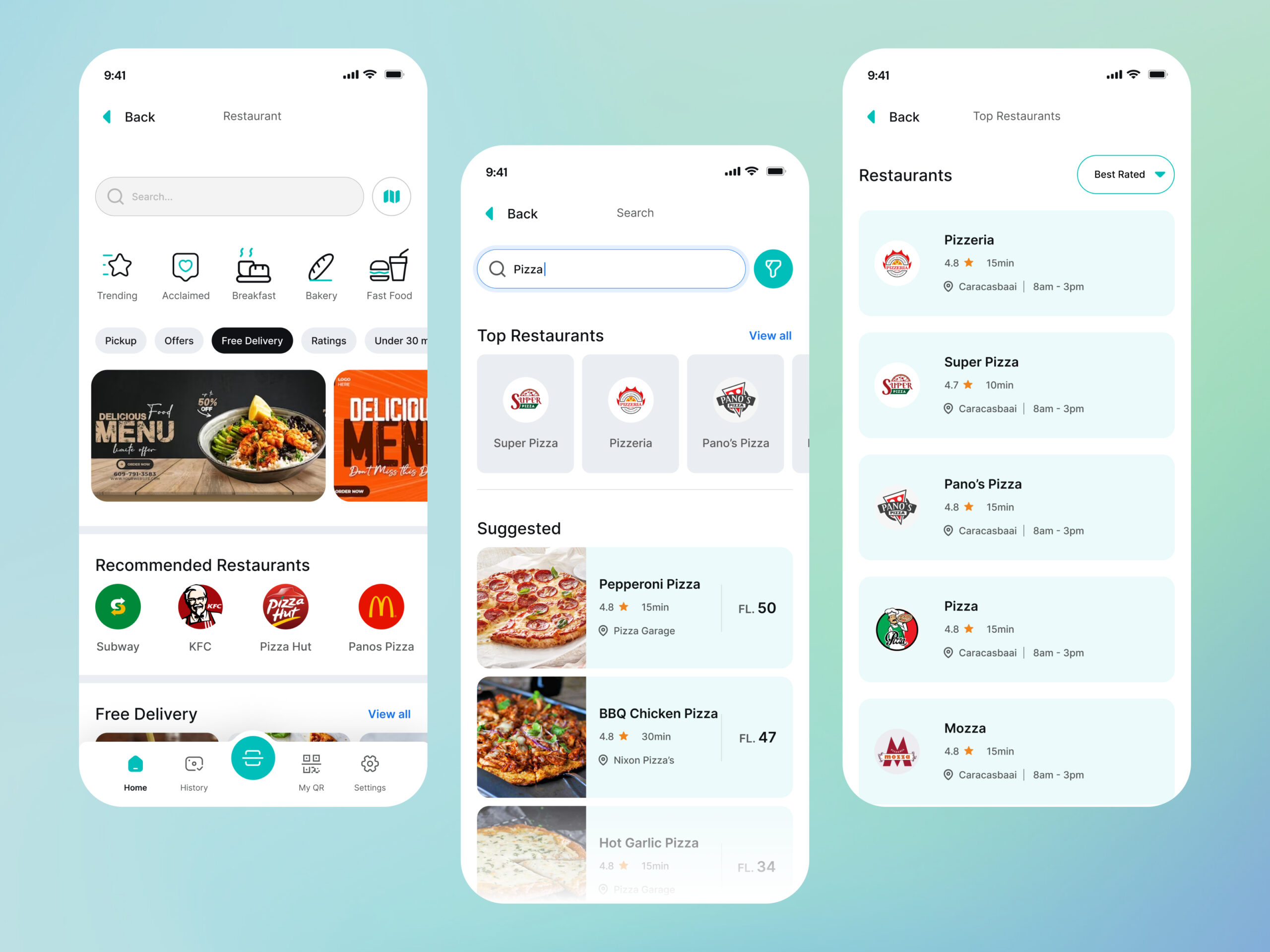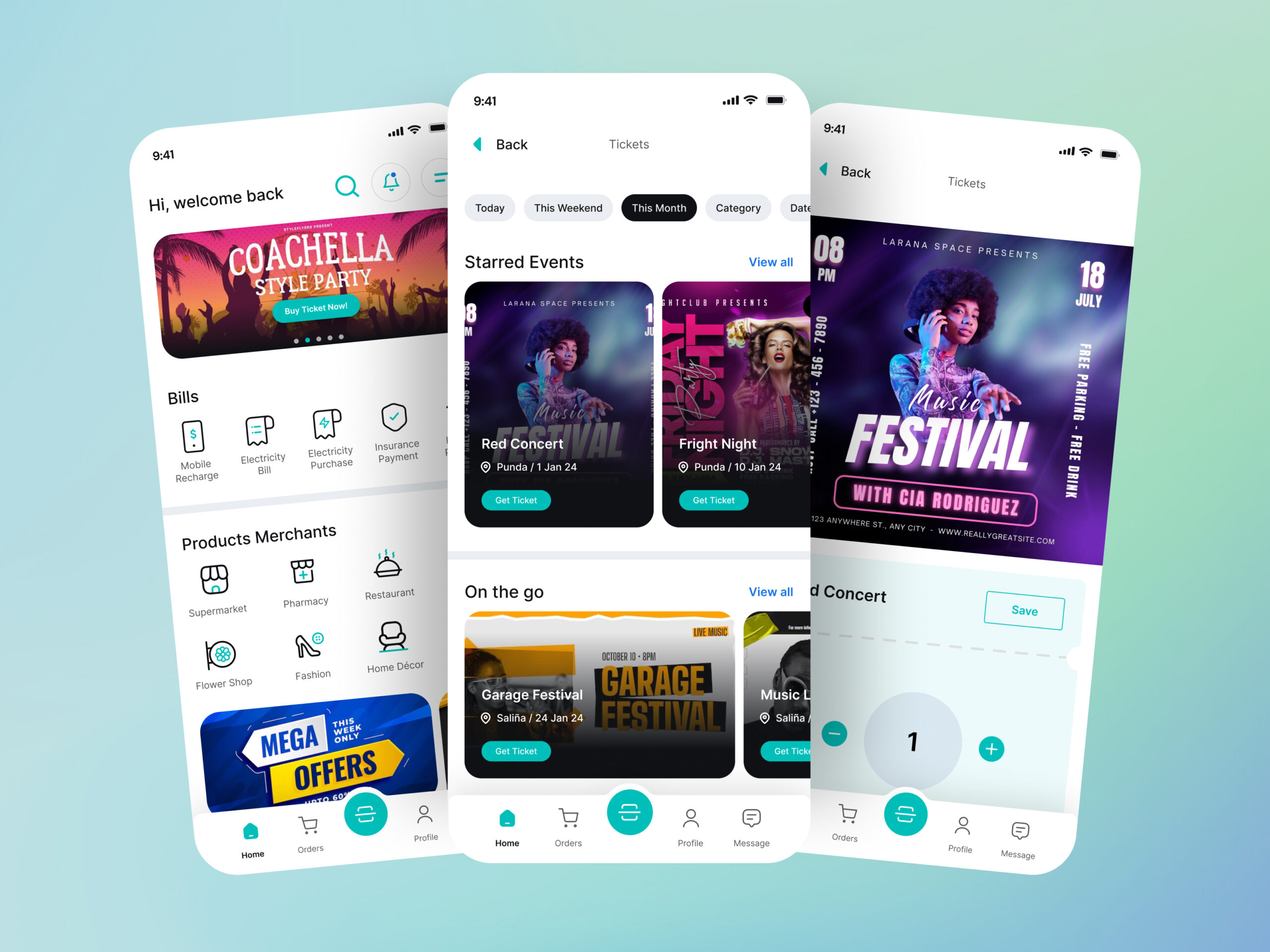
PROBLEM
The Blink app addresses the inefficiencies in the service and activity booking industry, where customers, businesses, and logistics providers struggle to connect effectively. Customers face difficulty finding reliable services, managing bookings, and receiving timely updates. Business owners lack tools to streamline operations, analyze performance, and communicate with their customers. Drivers, essential for logistics, often operate without the necessary tools to efficiently handle orders, routes, and communication. Additionally, existing platforms fail to provide an integrated solution for managing these roles under one ecosystem.
CHALLENGES
Building Blink presented several complex challenges. The need for real-time functionality, such as live tracking, dynamic updates, and instant communication, required robust backend architecture. Ensuring a seamless user experience across multiple roles (customers, business owners, and drivers) demanded intricate UI/UX design. Payment integration and handling payouts, commissions, and refunds while adhering to local regulations in regions like Curaçao added a layer of financial and compliance complexity. Lastly, scaling the platform to accommodate growth without compromising performance was a critical technical hurdle.
Revolutionizing Connectivity with Blink
"A unified platform to connect customers, businesses, and drivers, solving inefficiencies in service and activity booking."
Blink redefines the way users interact with service providers by offering an intuitive, real-time solution. Its innovative features cater to diverse needs, ensuring every role—customer, business owner, or driver—gets a tailored yet cohesive experience. From discovery to booking, management to delivery, Blink provides seamless integration and operation.
User: admin@blink.com
Pass: password
Strategy and Development Approach
Technology Stack:
- Backend: Built using Node.js for its asynchronous event-driven architecture, ideal for real-time functionalities.
- Frontend: React.js for web interfaces and Flutter for mobile apps to ensure consistent cross-platform performance.
- Database: MongoDB for scalability and flexibility in managing structured and unstructured data.
- Real-Time Communication: WebSockets for instant updates in chat, booking confirmations, and driver tracking.
Design Tools and Process:
- Figma was the primary tool for UI/UX design, ensuring a collaborative design process that aligned with stakeholder feedback.
- A mobile-first approach was adopted to prioritize seamless functionality on smaller screens, addressing customer needs.
Development Practices:
- Agile methodology was implemented, with iterative sprints allowing rapid development and continuous improvement.
- Integration of Jira for task management and GitHub for version control ensured smooth collaboration among team members.
Security and Compliance:
- Payment integrations were designed to comply with PCI DSS standards for secure transactions.
- OAuth 2.0 was used for secure user authentication across all roles.
Testing and Deployment:
- Automated testing with Selenium for frontend and Mocha for backend APIs ensured stability.
- Continuous integration and delivery pipelines via Jenkins streamlined deployment to staging and production environments.
Blink leverages these technologies and strategies to deliver a powerful, user-focused platform that seamlessly connects all stakeholders in the service and activity booking ecosystem.


Plan of Action.
Phase 1: Discovery and Planning
Objective: Define the app's scope, gather requirements, and set goals.
Requirement Gathering:
- Conduct workshops with stakeholders to understand user needs.
- Define features for customers, business owners, drivers, and the super admin.
Market Research:
- Analyze competitors in the service and activity booking industry.
- Identify pain points to differentiate Blink.
Technology Selection:
- Finalize the tech stack:
- Backend: Node.js
- Frontend: React.js (web) and Flutter (mobile).
- Database: MongoDB
- Real-Time Communication: WebSockets
- Finalize the tech stack:
Design Workflow:
- Use Figma to create wireframes and prototypes for all user roles.
- Validate designs with stakeholders before proceeding to development.
Phase 2: UI/UX Design
Objective: Build a user-centric, visually appealing, and functional interface.
Wireframing:
- Create low-fidelity wireframes for core features (e.g., dashboard, bookings, real-time tracking).
Prototyping:
- Develop clickable prototypes in Figma to simulate user flows.
Feedback Iterations:
- Collect feedback from stakeholders and users to refine designs.
Final Design:
- Create high-fidelity designs with detailed microcopy, tooltips, and error states.
- Include dark mode and RTL support for localization.
Phase 3: Backend Development
Objective: Implement robust APIs and scalable architecture.
Setup:
- Configure the backend environment using Node.js and Express.js.
- Set up MongoDB with collections for users, businesses, bookings, and activities.
API Development:
- Build RESTful APIs for:
- User authentication and roles (OAuth 2.0).
- Real-time chat and notifications using WebSockets.
- Booking management and payment processing.
- Build RESTful APIs for:
Integration:
- Integrate third-party APIs:
- Payment Gateway: CxPay (for Curaçao).
- Geolocation: Google Maps API.
- Integrate third-party APIs:
Testing:
- Write unit tests for APIs using Mocha.
- Validate performance under different loads.
Phase 4: Frontend Development
Objective: Create responsive and user-friendly web and mobile interfaces.
Web Dashboard:
- Develop the super admin and business owner dashboards using React.js.
- Implement real-time data rendering for bookings and analytics.
Mobile Apps:
- Build customer and driver apps using Flutter.
- Ensure smooth navigation and consistent UI/UX across devices.
Responsive Design:
- Optimize all interfaces for desktops, tablets, and mobile screens.
Localization and Accessibility:
- Add multi-language support.
- Ensure compliance with accessibility standards (WCAG).
Phase 5: Testing and Quality Assurance
Objective: Ensure the platform's stability, usability, and security.
Automated Testing:
- Use Selenium for frontend and Postman for API testing.
User Acceptance Testing (UAT):
- Conduct testing with real users for each role (customer, business owner, driver, admin).
Performance Testing:
- Test app performance under high load conditions using Apache JMeter.
Security Testing:
- Validate compliance with PCI DSS standards for payment security.
- Conduct penetration testing to identify vulnerabilities.
Phase 6: Deployment
Objective: Launch the app in a live environment.
Setup CI/CD Pipeline:
- Use Jenkins for automated deployment to staging and production environments.
Staging Deployment:
- Launch a staging version for final testing.
Production Deployment:
- Deploy the app on cloud infrastructure (AWS or GCP) for scalability.
- Configure DNS for custom domains.
Phase 7: Post-Launch and Maintenance
Objective: Ensure smooth operation and continuous improvement.
Monitoring:
- Use New Relic or Datadog for application monitoring and alerts.
Bug Fixes and Updates:
- Address issues reported by users promptly.
- Roll out regular updates for new features and improvements.
Feedback Collection:
- Use surveys and analytics tools to gather user feedback.
Scaling:
- Optimize architecture for increased user load.
- Expand feature set based on user needs and market trends.
Tools and Technologies Used
- Backend: Node.js, Express.js
- Frontend: React.js, Flutter
- Database: MongoDB
- Design: Figma, Adobe XD
- APIs: Google Maps API, CxPay
- Testing: Mocha, Selenium, JMeter
- Deployment: AWS/GCP, Jenkins
- Monitoring: Datadog/New Relic
This plan of action ensures a structured, efficient approach to delivering a high-quality Blink app, catering to all user roles and maintaining long-term scalability and usability.

